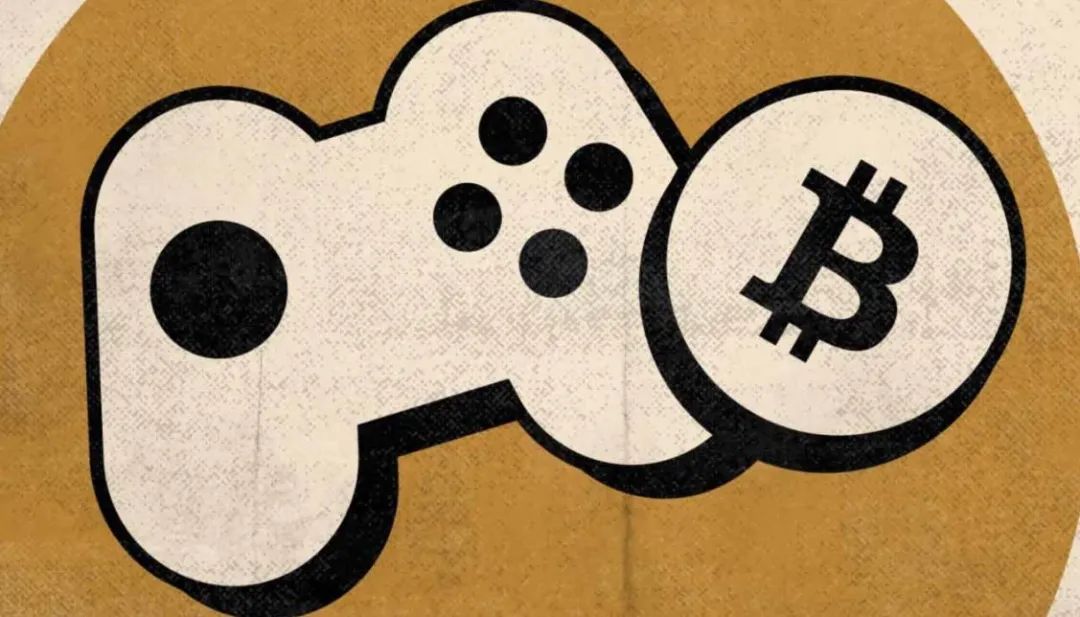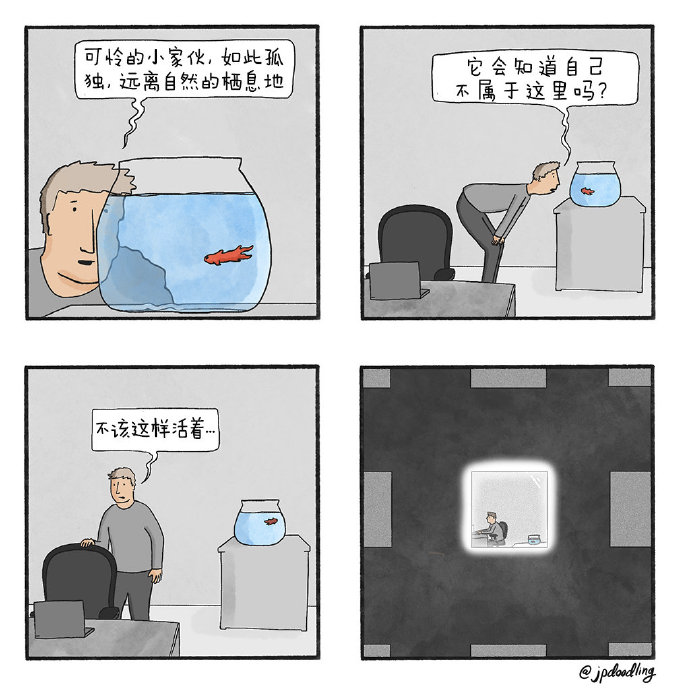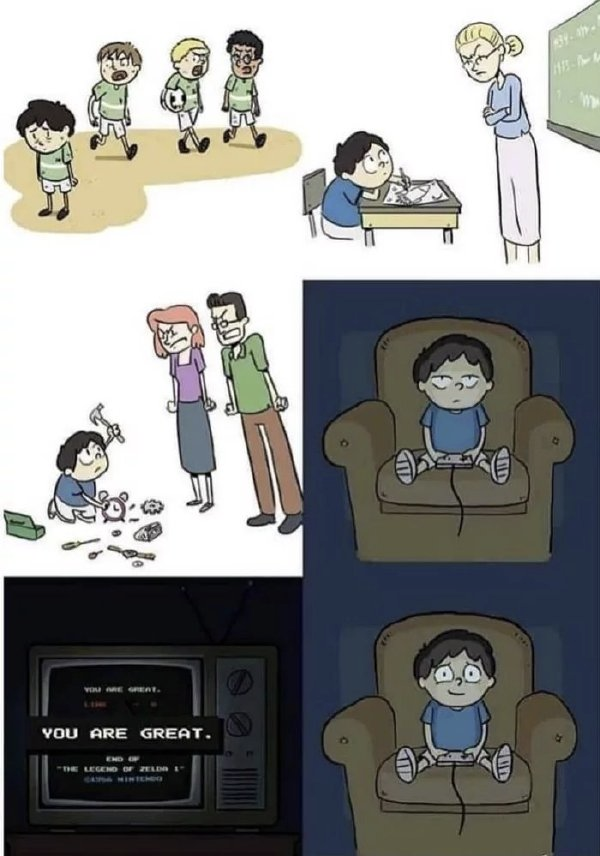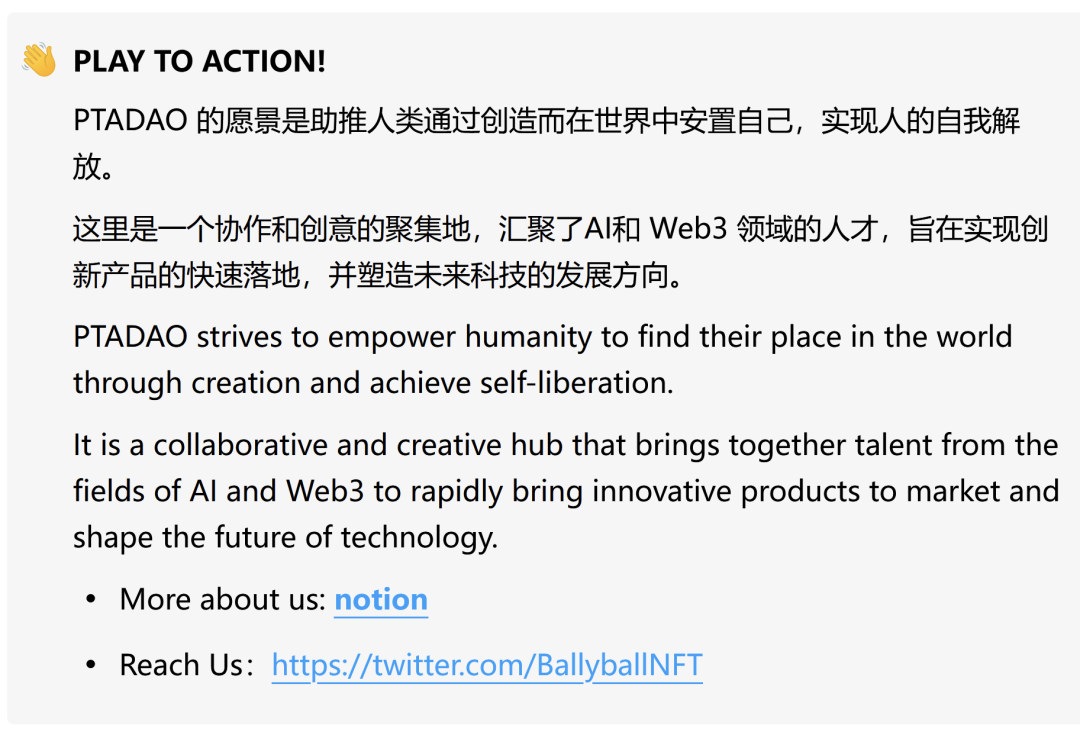Exploration of Full-Chain Games Freedom, Liberation, Authenticity, and the On-chain Deployment of Game Core
Full-Chain Games Exploring Freedom, Liberation, Authenticity, and On-chain Game Core Deployment
In the industrial world, people have become social animals, human miners, and consumables… They exist as means of production, but they are not real in terms of human life. The novelty and fun pursued by games, on the contrary, involve greatness, freedom, liberation, and reality…
By Hu Yilin, member of the Wayward Three Views Advisory Group, Associate Professor of the Department of History of Science at Tsinghua University
Editor/ Kaka
- How does the on-chain intelligence platform Arkham accurately target ICP?
- Analysis of the BOLD Verification Protocol How to Make Arbitrum More Decentralized?
- Assessing the Impact of EIP-4844 on Layer2 Protocol Costs and Profits
01. Games and Greatness
Recently, two scientists from OpenAI published a book called “Why Greatness Cannot Be Planned”, attempting to argue that great technological innovations are often not the result of pre-planning.
Since I came to Tsinghua, I have been researching and teaching the history of technology, and I am no stranger to this conclusion. There are too many cases that can be found in the history of technology, such as the agricultural revolution, the industrial revolution, and the power revolution.
First of all, the question of “why greatness cannot be planned” is, in a sense, a “begging question”, where the definition of the concept presupposes the answer. The so-called “plan” refers to the steps or plans that are pre-determined towards specific results, and formulating a plan requires sufficient estimation of the results and paths; but the so-called “greatness” often refers to those major changes that are beyond expectations, and since they are difficult to estimate, it is naturally difficult to plan.
However, this proposition is not simply a tautology, but has certain inspiring significance. It reminds us to reflect on the conditionality of “planning”. The existing technological system is often the background condition that planning must refer to. For example, if I plan to build a bridge, I need to investigate the available technology and equipment in the existing market, such as what materials are available, what engineering machinery is available, what transportation tools are available, and so on. After comprehensively understanding the existing technological system, I can effectively formulate a plan: whether this bridge can be built, how long it will take and how much it will cost…
Building a bridge in a place where there was no bridge before is also a kind of “innovation”, but it is not the “great innovation” mentioned in that book, or the traditionally called “disruptive innovation” or “creative destruction”. The characteristic of disruptive innovation is that it not only needs to use the existing technological system, but also needs to disrupt and reconstruct the technological system.
It takes a long time for a new technology to grow from an inconspicuous bud to a new system, and during this period, the new technology not only cannot provide higher productivity, but is more like a waste of not doing the right thing.
In hindsight, disruptive innovation is of course very “useful” in the end, but it may not be so in the budding stage. For example, in a system with highways and gas stations everywhere, cars are certainly more useful than horse-drawn carriages, but in a system with dirt roads and post stations, primitive cars are not necessarily better than horse-drawn carriages.
Electric lamps had been studied for 80 years before Edison, and there were more than 20 inventors of incandescent lamps alone; airplanes had nearly a century of research and practice before the Wright brothers, and if we trace back to Leonardo da Vinci’s ideas, it has a history of four to five hundred years; the earliest crops were not fully productive before they were domesticated, and it took hundreds of years of artificial selection to achieve domestication (archaeologists have proposed the garden hypothesis regarding the motivation for early domestication)…
If the goal was simply to improve lighting, people in 1800 should have focused on oil lamps; if the goal was simply to fly, people in 1800 should have focused on hot air balloons. If everyone focused on practical endeavors, there would be no fertile ground for disruptive innovation.
In summary, relying solely on visible practical purposes is not enough to inspire the tireless drive of inventors and investors. But they are clearly not blindly tinkering without purpose, swinging hammers randomly or blindly following trends without lasting accumulation. In that case, it would be difficult to achieve great things.
So what exactly drives countless inventors and investors to consistently invest their energy and resources in new technologies that have not yet demonstrated practicality, or even imagined practicality? In response to this, two scientists from OpenAI provide an answer: “Please note that this does not mean that life should be aimless and go with the flow. The novelty search algorithm does not predefine specific goals, but it has guiding values, which are novelty and interestingness. As long as you choose a direction that is more novel and more interesting each time, you will not be ordinary.”
Isn’t “novelty and interestingness” exactly the pursuit of “games”? We may call it a “game attitude” in order to distinguish it from a “practical attitude”. The “game attitude” is an indispensable force driving great innovation.
It is worth noting that “games” are relative to “practicality”, but not contradictory to “making money”. As long as there is a cultural foundation that pursues novelty and interestingness, new inventions that are not yet practical can also be profitable as toys or entertainment projects. These game projects not only provide games and entertainment for the public, but also inspiration and feedback for inventors and investors.
For example, NVIDIA’s graphics cards have become a necessity in the AI industry, but they have long been supported by the gaming industry; OpenAI first gained recognition by creating AI players in the game DOTA2.
Before Watt improved the steam engine, he started a business selling toys and musical instruments, and his partner Bolton, who helped Watt put the steam engine into production, made his fortune by making toys (not children’s toys, but various extravagant gold and silver vessels).
Inspired by their father’s purchase of a helicopter toy for them in their youth, the Wright brothers began making their own toys to sell to their friends. They discovered that increasing the size of the toys made it difficult for them to take off, which inspired them to study the principles of flight. The Wright brothers’ parents bought and made many toys, even allowing the Wright brothers to occasionally skip school in order to study and modify the toys.
The theoretical basis of the steam engine is the vacuum pump, and this invention originated from the problem of pumping water from garden fountains. Later, both the Magdeburg hemispheres and Boyle’s vacuum pump were widely used in public performances…

Bolton's small goldware

The Wright brothers' helicopter toy in their childhood (reproduction)

“Electric Kiss,” an early application of electricity, where the host generated electricity by rubbing the wheel to allow young couples to experience the “electric shock” feeling. Before batteries and electric motors, static electricity had few practical applications and was mainly used for various novelty demonstrations.
02. Games and Freedom
We have interpreted the meaning of “games” as the “driving force of innovation.” Isn’t this an exaggeration of “games”? Not really. In a sense, this is actually a derogation of “games.” Because this explanation only sees games as a “tool” that benefits other endeavors.
In his classic work “The Man in the Game,” Huizinga discusses many “explanations” of games and finally comments, “they all assume that games must serve something that is not a game… each of the above ‘explanations’ can be refuted in this way: ‘Even if that’s the case, what is the essence of the pleasure of playing games?'”
The viewpoint that “games are beneficial for innovation” is no more sophisticated than the popular view of games. The popular view believes that the meaning of games lies in “balancing work and leisure” – “appropriate games help relax the nerves in order to better engage in work.”
Regardless of what games are meant to serve, we can continue to ask: What is the meaning of that purpose? For example, what is the purpose of technological innovation? What is the purpose of people working hard?
Technology and labor are the true instruments. People always say that technology is neither good nor bad: a knife can be used to kill or to cut vegetables, and the value of technology depends on how people use it – this neutral view is somewhat naive, but those who support technological neutrality often only use this argument when technology is criticized, but pretend to forget this view when technology is praised as a tool. If technology is truly considered just a tool, regardless of good or bad, then why is the development of technology always considered a good thing?
The development of technology itself is not a good thing. Ultimately, it is only when the development of technology promotes a better life for humanity that it is a good thing. However, many technology neutralists do not truly see technology as a good or bad tool, but consciously or unconsciously see technology as the ultimate goal. For example, many people see “XX is beneficial for innovation” and assume that the meaning of XX has been defended, without considering what those “innovations” are actually beneficial for.
If games are beneficial for innovation, then games have legitimacy. In that case, under certain conditions, does slavery also have legitimacy if it is beneficial for innovation? Plundering, exploitation, theft, brainwashing… if they are beneficial for innovation, does that mean they are all good things? Some people defend the primitive accumulation of capitalism, while others defend the 996 system and the hardships of the working class. They all believe that it is worth sacrificing the suffering and sacrifices of an entire class or generation in order to promote technological progress. The problem is that technological progress is endless. Should this generation sacrifice their own happy lives to accelerate technological progress so that the next generation can enjoy happiness? However, they can also continue to sacrifice and accelerate technological progress! If humanity should sacrifice happiness for technological progress, then considering that technological progress is endless, the conclusion is that humanity should sacrifice endlessly, suffer endlessly, and labor endlessly?
If labor is not suffering but a life that is “better” than games, then is the way we benefit future generations to find ways to make them play less and work more? Is this the direction of human civilization? Some ant enthusiasts may think so. In their eyes, the most ideal social form should be an ant society, where the queen ant is solely focused on reproduction and the worker ants work together diligently. But I obviously do not aspire to such a society. Freedom is the nature of human beings, and a more and more free and comfortable life is what we should aspire to.
When advocating arguments like “labor is the happiest,” it is necessary to distinguish between intrinsic and extrinsic happiness. For example, although labor itself may be painful, thinking that labor can benefit others (our future selves, our descendants, or all of humanity) brings joy. This is extrinsic happiness. As mentioned before, if this “benefit” means “bringing more labor to others,” then this “happiness” is still illusory or self-deception. Only when one thing can provide intrinsic happiness can we break free from infinite regression and find an anchor of meaning. So, what kind of labor provides intrinsic happiness? It is nothing more than labor that is like “games.”
So, technology and labor themselves have no meaning, they are tools and means to pursue meaning. They only become meaningful when they eventually become games or games themselves.
It is more accurate to say that games are meaningful only when they serve other serious matters, rather than saying that games are meaningful only when they become games themselves. Human civilization has achieved this state of making everything a game in certain areas, and the most typical example is the ancient Greek city-state. In his famous book “Philosophy of Art”, Hippolyte Taine said, “Oh, Greeks! Greeks! You are all children!” Yes, they treat life as a game, treat all serious matters of life as a game, treat religion and gods as a game, treat politics and country as a game, treat philosophy and truth as a game.”
The gymnasium and the theater were the cultural core of the Greek city-state, and in the marketplace and the town hall, the Greeks engaged in discourse and debate just like participating in equal games. In the halls of academia, the Greeks also took pride in their “curiosity” and enjoyed the pleasure of knowledge itself, while being ashamed of seeking practical purposes for knowledge. Legend has it that a student asked Euclid what the benefits of studying geometry were, and Euclid threw him three coins and scolded him, “You have received the benefits now, get lost.” This is the cultural trait of the Greeks, and different aspects such as the Olympics, drama, democratic politics, and mathematics can all be summed up as the Greeks’ “spirit of play.”
Of course, the way of life of Greek free citizens depended on the support of slavery, but for modern people, even if they are not free during work, they can still be free citizens in the 8 hours after work. If this 8 hours of free life cannot be achieved, what is the meaning of 8 hours of work?
Unfortunately, this 8 hours of free life is constantly threatened by overwork and the culture of overwork, and at the same time, it is always occupied by the entertainment industry that numbs and captivates people. But fortunately, we still have games, games still have the power to provide liberation. I mentioned in my previous article “Games and Their Mission”: “Although the game industry is also undergoing modernization and alienation, in order for games to be fun, they must always leave room for ‘freedom’ for people. The mission of modern games is not only to fill people’s leisure time, but more importantly, games can temporarily lift people out of the utilitarian cycle and allow them to experience the possibility of freedom again.”

03. Games and Liberation
Modern society has freed slaves, which is indeed a great progress for human civilization. However, if we are complacent about “progress” and lose the determination and ability to further transform society, allowing the history of civilization to end here may not necessarily be a good thing. Herbert Marcuse systematically criticized the dilemma of “advanced industrial society” in his classic work “One-Dimensional Man”: humanity has lost the dimension of criticism and only has the dimension of obedience to the industrial and technological system.
Herbert Marcuse said, “The liberating power of technology – the toolification of things – becomes the shackles of liberation, even human beings become tools.”
Industrial technology can certainly be beneficial to humanity, helping to free people from labor and pursue happiness. However, this statement cannot omit the “human” as the goal and turn it into “industrial technology is beneficial”, instead turning people into tools for the benefit of industrial technology, which is a reversal of priorities.
We have already discussed the reversal of means and ends – technological progress should have been a means to benefit humans, but many modern people see it as the goal that humans should pursue. Marcuse further points out that this value reversal is institutionally solidified in developed industrial societies. Modern political systems are no longer established with the goal of pursuing freedom, equality, or human happiness. The legitimacy of modern political systems is based on “developing productive forces”, and it seems that various “isms” disputes are illusory, while improving productivity is the real deal. However, the problem is that in order to improve productivity, one must adapt to the industrial technological system, and as a result, the institutions that can adapt to and develop the industrial technological system are considered the best. Thus, humanity has reversed means and ends on a global scale in the entire civilized society, making the maintenance of industrial technological development the highest goal.
In modern society, if people still want to talk about concepts such as freedom, justice, and happiness, they are easily accused of being “impractical”: you said it well, but how exactly should we do it? “Pragmatic” people demand that you propose feasible “plans”: what to do in the first step, what to do in the second step, and so on, after all, a journey of a thousand miles begins with a single step. But as mentioned earlier, great innovations cannot be planned. In this era of technology that advocates disruptive innovation, the entire social system itself completely rejects disruptive innovation.
But is our social system really perfect? Or does it only need gradual repairs and improvements to be immortal? In the past few decades, we have not seen everything getting better and better smoothly. On the contrary, problems such as cultural conflicts, social polarization, class stratification, and wealth disparity have become more and more serious. With the development of technology, the ability of humans to cause disasters and self-destruction has also increased day by day. Even Fukuyama, who proposed the “end of history” thesis, no longer believes that humanity has found the ultimate answer to the social system.
If we still expect great changes to occur in human society, how is this possible? Do we have to wait until the existing system collapses before we have a chance to rebuild from the ruins? However, with the advancement of technological power, the collapse of modern civilization and the reconstruction of ancient civilizations are not the same. The disasters caused by ancient civilizations were localized, while the cost of rebuilding modern civilization may be an irreversible civilization and ecological disaster.
So is it possible to explore a disruptive social transformation in a more gentle way? Marcuse’s student Fenberg proposed some thoughts in “Selectable Modernity” to break out of “instrumental rationality” and seek diverse rationalities. He did not mention games, but the typical case he provided for “another rationality” is the game of Go in East Asia. He pointed out the emphasis on etiquette and respect in Go matches, which goes beyond mere calculation for the purpose of winning. In fact, this is precisely the characteristic of “games”: many games have certain goals, but no game is “by any means necessary” to achieve those goals. The true goal of a game is always the intrinsic joy of the game itself, including the pleasure of novelty, achievement, friendship, and other forms of enjoyment.
In addition to the spirit of games that goes beyond instrumental rationality, a well-designed game is more likely to directly become an experimental stage for a certain ideal social system. People can first explore the possibilities of various radical social changes in the game without experiencing the ravages of war in reality, and then implement them when they are relatively mature.

Whether going left or right, it's all for the development of technology

The wealth gap in the United States is increasing, with the top 1% surpassing the wealth of 60% of the middle class
04. Games and Reality
Reality is unreal, and the virtual is not virtual.
Earlier, we discussed two views on games. One is instrumentalism, which sees games as tools for other things – combining work and leisure, or promoting technological innovation, and so on. The other is existentialism, which holds that games have their own intrinsic rationality and do not need another thing to justify them – the intrinsic meaning of games includes various pleasures, novelty, achievement, excellence, and so on.
Note that we are referring to two views on games, not two types of games. Different ideas can exist regarding the same game. For example, for the same sport, some people may view it as a profession to make a living, some view it as a means to exercise the body, and some enjoy its intrinsic joy. Even within the same person, multiple ideas may coexist.
In addition to the perception of games themselves, how people view games is also influenced by their perception of the real world.
In Japanese, there is a word called “genchou,” which refers to those who live a fulfilling life in the real world. ACG (anime, comics, games) enthusiasts consider themselves opposed to “genchou” because people who are too fulfilled in reality usually cannot understand the world of anime and game enthusiasts.
This is of course reasonable. Just like any game, reality can immerse people in it. However, compared to many games, most people’s “gaming experience” in the real world is not very good, so they are willing to seek supplements in the virtual world. Of course, some people just want to escape reality through games, while others still insist on hoping to change reality.
Unfortunately, the real world is not always “more fulfilling” than virtual games. Feeling fulfilled in the real world is only a minority of people or a minority of time. For the majority of hardworking people, what they experience in real life is only “hard work”, not fulfillment.
A production line worker sits still at his workstation all day screwing screws, dragging his exhausted body back to a small cubicle in the concrete jungle by taking a crowded bus. The most fulfilling experience in such a life is probably provided by the virtual world in the phone, where he can relax a little on the way and before bedtime. Hard work can make people forget to think, but it cannot fill their spiritual world. Otherwise, slaves who work like cattle and horses would be the most fulfilled.
In the industrial world, people have become social animals, human resources, expendables… They exist as real production materials, but their lives as human beings are not real.
What determines a person’s sense of reality? Many works of literature and art portray it this way: when someone travels through time or falls into a dream, doubting the reality of the world, the first thing they do when they open their eyes is probably to look in the mirror, or look at their own hands (while moving their hands), or pinch their own face. These actions are not just receiving information unidirectionally, but trying to engage in certain activities and seeing the “feedback” of these activities in this world. If I laugh but the reflection in the mirror doesn’t, if I move my finger but the hand I see doesn’t move, if I touch my face but feel no change, then this world is not real.
Seeing oneself in the external world is the way to confirm the existence of the world and oneself. In fact, Marx believed that this is the fundamental meaning of “labor”: “The object of labor is the objectification of human class life: man not only doubles himself in his consciousness, but also actively and really makes himself double, and thus intuitively sees himself in the world he has created.” (“Economic and Philosophic Manuscripts of 1844”)
Seeing the results of a bountiful harvest after hard work, seeing mature works after careful polishing, seeing others’ recognition after taking positive actions… When the actions I can see leave a mark in the world instead of dissipating, I easily feel fulfilled.
But Marx also noted that this behavior of “intuitively seeing oneself” has undergone “alienation” in the industrial age: “Labor is something external to the worker, i.e. it does not belong to his essence: therefore he does not affirm himself in his work, but denies himself… The worker feels free only outside of his work, and in his work he feels unfree.” (“Economic and Philosophic Manuscripts of 1844”)
Why is this happening? The first reason is the new mode of industrial production. Assembly line production is the culmination of industrialization. A worker on an assembly line is very different from a traditional craftsman. When a traditional craftsman is creating something, his skills, vision, taste, creativity, and will can all be directly reflected in his work. When his skills improve, the work becomes more exquisite; when his creativity is unique, the work becomes more distinctive; when he is careless, the work becomes rough… However, none of these experiences occur for an assembly line worker. The assembly line does not require him to improve his skills or ponder over creativity. He only needs to complete predetermined actions according to requirements, and these predetermined actions do not reflect his own will. It is even possible that an assembly line worker has never seen what the end product of his production looks like. An employee on an Apple iPhone production line may have never played with an iPhone and does not feel proud of its excellent design.
The only feedback that workers can see is their salary. But money is a completely neutral thing and does not show any of your individuality. In fact, you are not receiving wages as a unique individual, but as a provider of “human resources,” receiving the sale price of a certain amount of labor resources. The only thing directly observable in the salary is the feeling of being treated as livestock, not as a human being. No wonder Marx said, “The animal’s product becomes a human’s product, while the human’s product becomes an animal’s product.”
In addition to physical work, collective action has also become increasingly elusive. In ancient times, doing good deeds could be praised throughout the villages and towns, while doing bad deeds could be criticized by neighbors. But a modern person living in a concrete forest may not even know their neighbors after living there for ten years. In the real world, there are almost no public spaces where one can express themselves and receive feedback. Instead, only virtual spaces such as microblogs and social media still retain some room for action. However, many influential people, including celebrities and politicians, are also losing their true selves more and more, becoming “characters” tailored by the entertainment industry.


“To intuit oneself in the world one has created” can also happen in the digital world and virtual spaces. It can be said that in this one-dimensional industrial society, virtual space has become a place of redemption to regain a sense of reality.
The redemption offered by the digital world has two ways: one is through hallucinogenic anesthesia, immersing people through various sensory stimulation and frequent operations, similar to using alcohol to forget about the bad reality; the other is to provide more tangible “feedback,” giving people the opportunity to leave more intuitive marks through their labor and actions.
Even single-player games often involve collection systems, decoration systems, achievement systems, and so on, allowing players to see the results of their efforts at any time. Are players playing card-drawing mobile games just for the beautiful card faces? Not entirely. Because these beautiful card faces can be found online and saved with a right-click. You can look at them for as long as you want. But players’ desire is not just to look at the cards, but to “own” them.
Is this kind of “ownership” unreal? Not necessarily, because I can actually enable it, operate it, and cultivate it, rather than just passively watching. I can see the feedback of my actions through it.
In addition, the digital world is not limited to single-player games, but also provides rich opportunities for interpersonal interaction. In these interactions, various online communities have been formed around common interests, and people’s actions can indeed trigger echoes within them, gaining a real sense of recognition, participation, and interaction.
In the online world, we can see many subtitling groups, mod creators, strategy sharers, encyclopedia organizers, speedrun challengers, and more. They are not trying to make money, but selflessly share or showcase their creations. Because they can see the world’s response and positive feedback after sharing.
In these “virtual worlds,” things people weave and create can not only receive echoes within the virtual world but also have the potential to feedback to our real world.
In a sense, the characteristic of human culture is nothing more than constantly constructing meaning in the virtual world and in turn leading the development of society. This is not my unfounded opinion, but the consensus of many historians and cultural scholars. Yuval Noah Harari’s popular book “Sapiens: A Brief History of Humankind” tells the core point, he summed it up himself: “The best description of Homo sapiens is that he is a storytelling animal. We create fictional stories about gods, nations, and companies, and these stories form the basis of our society and the source of our meaning in life.”
Starting from the earliest cave paintings to epics, dramas, literature, comics, movies, and electronic games… the carriers of constructing the “virtual world” created by humans are constantly enriching, and the real power of the virtual world has never weakened. What people pursue in the virtual world has always been something real, and even something more real than reality itself, namely the power to dominate and lead reality.


Even single-player games have a visible sense of achievement
05. Games and Excitement
Every game, to a greater or lesser extent, contains the spirit of freedom and the power of liberation, even the vulgar games produced by the entertainment industry. Because every game requires players to participate and interact to some extent, the “players” of games who maintain autonomy and interactivity are always freer than mere “audiences”.
McLuhan is the most famous media thinker, and he pointed out that “the medium is the message,” which means that in terms of the impact on people, the form of the medium is often more important than the content conveyed by the medium. Specifically for games, we can also say that the form of gameplay is equally important as the specific content of the game.
McLuhan also proposed the distinction between “cool media” and “hot media” to differentiate the different tendencies of media. Cool media have lower clarity and leave more blanks, requiring more human participation to complete; while hot media have higher clarity, leave fewer blanks, and only require simple acceptance of information.
Applying the concepts of cool and hot media, games always have some “cool” elements because the focus of games is always on “playing” and active human participation.
McLuhan’s use of the concept of “clarity” is easily misunderstood. In fact, the “cool” and “hot” of media is not a scientifically precise concept that can be measured. McLuhan did not borrow the words “cool” and “hot” from natural sciences; in fact, he borrowed them from slang. Perhaps a better translation would be “cool media” and “spicy media”?
We might say, “That cool girl is wearing hot pants,” or “That hot girl’s top is cool.” Cool and hot often intertwine. McLuhan noticed the ambiguity of the concepts of cool and hot in slang, and he did not reject this ambiguity. Instead, he borrowed these two words precisely because of their popular semantic ambiguity.
Clearly, McLuhan prefers “cool”. When we say “this thing is not cool at all,” we are not expressing any temperature concept, but more likely saying that the thing is “boring” or “irresponsible, embarrassing, or indecent.” McLuhan said, “The word ‘cool’ used in slang may have many other meanings. It means taking responsibility, personally participating, and involving all of one’s senses.”
It should be noted that when McLuhan refers to “involving all of one’s senses,” it does not mean that the content of the medium includes all sensory experiences, but rather that the “blank spaces” provided by the medium contain the possibility of comprehensive participation. If the medium itself has “high clarity” and provides overly rich sensory content, it will instead inhibit people’s initiative and interactivity.
Human abilities are limited. To focus on a certain action, it is necessary to simplify and shield excessive sensory information. The saying goes, “If you don’t hear anything outside, you can concentrate on reading the classics.” If someone is constantly shouting in your ear, if you constantly smell the aroma of food, and if the table keeps vibrating with water, then not only can you not concentrate on reading, but you can’t focus on anything.
LEGO bricks are an example of “low definition” toys. Why not make the particles smaller and the colors more vibrant? This way, the resolution of the bricks’ creations may be more detailed, but it would be more difficult for players to manipulate and build freely. Of course, if the results are too rough, the sense of achievement from personal participation would be diminished.
Chess is another example of “low definition” games. Players do not need lifelike chess pieces and excessive sensory stimulation, such as a fuzzy “horse,” a booming “cannon,” or a bleeding “pawn.” Rich sensory content would actually disrupt the whole game. Go is the epitome of “low definition.” Its board and pieces are extremely simple, yet it provides the richest space for strategic play.
VR games appear to be typical “high definition” games because they attempt to provide overly rich content for all senses. However, this is not entirely the case. From my experience, the most exciting aspect of VR games is not the high-resolution realistic images or high-fidelity surround sound, but the stronger sense of participation – “I can intuitively see the movement of my own hands.” Although my body in the VR world is a fictional digital avatar, my every move can receive direct feedback. While traditional games also provide feedback on one’s actions, the range of actions is very limited, and I can only output “actions” through keys like WASD. Some VR games have a stronger sense of interaction and realism because the range of my actions is expanded, because my “all senses are involved,” rather than “all senses being stimulated.”
If the purpose of a game is just to satisfy the time-killing needs of couch potatoes, then it is worth developing towards “high definition” and “full sensory content”. However, if we hope for a game that is more inclined towards “innovation,” “freedom,” “liberation,” and “realism,” a game with revolutionary significance, then high-definition content is not so important. What is more important is “coolness,” the skill of leaving blank spaces to ensure a sense of realism and interactivity.
In my opinion, the truly revolutionary game is not a “sensory game”, but more likely a “fully on-chain game”.
06. Fully On-chain Game
The so-called “fully on-chain game” refers to: “All actions, interactions, and target states within the game are recorded on the blockchain. The core game logic and asset economy model are processed through blockchain. The blockchain serves as the game server, and all player operations are completed through interactions with smart contracts. Even the game narrative and governance can be decentralized through DAO, achieving true decentralized gaming.”
Of course, I also obtained more technical principles from PTADAO. Their vision is to empower humanity to find their place in the world through creation and achieve self-liberation. Under this vision, they are currently developing a fully on-chain strategy game guided by the blueprint of “Radical Market”, but I won’t explain it further here. Blockchain can provide decentralized and immutable historical records, and there have been many discussions about these features on my blog, so I won’t go into detail. Here, I will focus on discussing the specific significance of blockchain in a game.
1. Sense of Achievement
The immutability recorded by the blockchain provides a visible and solid sense of achievement. The results of actions are imprinted on the blockchain and cannot be tampered with by game operators or disappear due to game shutdown.
2. Authenticity of Interests
Blockchain comes with a global freely tradable currency system, which can introduce real money gambling into the game. Just like adding some stakes when playing cards can better motivate players to invest physically and mentally. In addition, the existence of actual interests can make various experimental social explorations more authentic. Furthermore, the decentralized and transparent nature of blockchain ensures fair and transparent relationships of interests.
3. Self-Organization of Communities
Around traditional games, rich and interesting communities can also form spontaneously, but social platforms are relatively flat, and the interaction among community members is dependent on various social platforms. The identities on various platforms and within the game often do not communicate with each other. However, organizational methods such as DAO formed based on blockchain can not only form self-organized communities from the bottom up but also allow players to control their identities and social interactions independently, without being constrained by any platform or service provider.
4. Transparency of Rules
Blockchain smart contracts can execute game rules in a completely fair and transparent manner, including various experimental and radical rules.
5. Transcending Space
Transcending the limitations of traditional regions and borders, joining the game does not require permission.
6. Beyond time
The game has the potential to continue operating spontaneously as long as there are players remaining, with no risk of server shutdown.
7. Incentive for innovation
Although fully on-chain games may have “low resolution,” they have more room for creativity, making it more conducive to generating content from the bottom up.
8. Exploring revolution
Players can hide their real identities and conduct utopian experiments in a safe and cost-effective manner.
Recently, I am willing to promote PTADAO for free precisely because of their understanding of fully on-chain games. Of course, I cannot guarantee that they will definitely create the revolutionary game I envision. Perhaps other fully on-chain games will succeed, or maybe semi-on-chain games also have prospects. Who knows? But I always believe that the integration of blockchain with new types of games will be revolutionary, not only in terms of gameplay but also in overcoming various challenges of modern industrial society.

We will continue to update Blocking; if you have any questions or suggestions, please contact us!
Was this article helpful?
93 out of 132 found this helpful
Related articles
- Why is no one talking about ‘blockchain’ now?
- Decoding Intent Revolutionizing the Web3 User Experience and Blockchain Order Flow
- An Overview of Coinlist’s Upcoming Native Cross-Chain DEX Chainflip Mechanism, Features, and Token Economy
- Celestia Researcher Interpreting 4 New Rollup Solutions
- Losses of over $50 million A comprehensive analysis of the cascade attack event caused by the programming language Vyper malfunction.
- Arthur Hayes In the future, humans will collaborate with AI through DAO.
- Opinion Block space is a commodity, and the growth trajectory of blockchain networks is similar to that of telecommunications networks.






